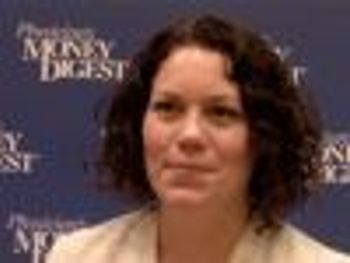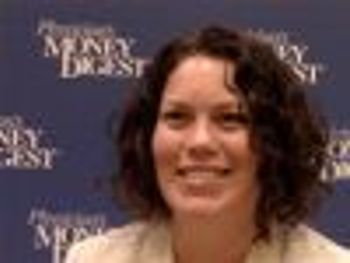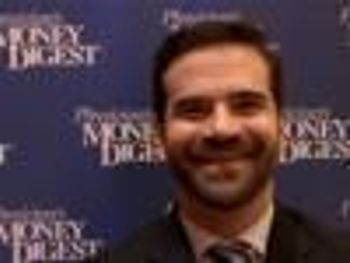
Physicians rarely see eye-to-eye with their organization's executive staff, but an environment of collaboration can soothe conflicts, according to Paul Weygandt, MD, JD, MPH, MBA.

Physicians rarely see eye-to-eye with their organization's executive staff, but an environment of collaboration can soothe conflicts, according to Paul Weygandt, MD, JD, MPH, MBA.

Alessio Fasano, MD, came to the US from Italy looking to expand his horizons beyond celiac disease. Instead, he became a leader in the treatment, research, and education of celiac disease and other gluten-related disorders.

Everyone faces a handful of money dilemmas throughout their lives, and how they handle these issues are extremely important.

Palm Springs may be known for its former hold on Hollywood, but there's another side to the area for visitors looking to explore the Great Outdoors.

A college degree is still pretty special-just 33% of Americans have one. But with total US student debt surpassing $1 trillion and unemployment for recent college grads reaching 9%, is it still worth it?

If you don't care about your hard-earned money, then go ahead and "invest" in financial products that are designed to solve a problem that doesn't exist.

In tough economic times with the cost of healthcare increasing, a new study finds ways to make paying for care easier to understand and to bring costs down for all involved.

With the S&P 500 and Dow Jones Industrial Average at all-time highs, the market's sleepy crawl upwards can lure investors into making bad moves.

A key reason why physicians are not jumping on board with the PCMH model is that they aren't certain how it affects their bottom line.

The decision to purchase individual disability insurance should be examined carefully with cost being only one determining factor.

Differing implementations of electronic health records and a lack of communication between clinicians and operational leaders are barriers to cost transparency, according to Beth Meyers, healthcare industry strategy director at Infor.

All the signs point to a rising economy for physicians. Enjoy it while it lasts and take this time to structure your finances with your advisors to prepare for other, less desirable economic climates to come.

Not only does a client not know what his or her advisor is charging, but, on average, the advisor doesn't know either. How is this possible?

Although dividend stocks lag when the market is on its way up, they tend to hold up better during downturns, making them a safe investment for many.

As the healthcare industry moves to value-based reimbursement, it faces a number of challenges, Matthew Zubiller from McKesson said at the Healthcare Financial Management Association's national meeting in Las Vegas.

Reducing hospital readmissions is one of the top priorities and cost-cutting measures among healthcare organizations.

Providers are struggling to understand the cost of many of the tests and procedures they offer, which hurts their ability to make good decisions, according to Beth Meyers, nurse executive and healthcare industry strategy director at Infor.

Preparation for the possibility of not being able to perform your duties as a healthcare provider may appear morbid, but it's a smart, proactive step.

Although quality measures and patient satisfaction are still just a small part of physician compensation, they are increasing in importance.

The biggest barrier to the healthcare industry's transition to value-based reimbursement is a solid understanding of what value really is, according to Matthew Zubiller, vice president and general manager for decision management at McKesson.

Retirees and pre-retirees alike will look to the income they make on investments to help carry them beyond their working days. Any turns in the stock market can hurt their plans for the future.

With stocks looking boring, many investors are selling for alternative investments. This is almost certainly a mistake.

The La Quinta Resort & Spa was, and still is, a retreat for Hollywood celebrities. Greta Garbo was married on the grounds, Frank Capra lived there, and golfer Arnold Palmer and ice skater Dorothy Hamill still frequent the resort.

While a retirement financial shortfall is of greatest concern to those in the lowest income brackets, there is still a risk of high-income earners being unable to sustain their lifestyles after retirement.

Employment and the economy all vary greatly depending on which state you live in. Even high-income earners will find it difficult to make a living in these states.

Study shows large-scale patient data analytics can help with early interventions for patients at risk of metabolic syndrome and reduce their medical costs.

Although the first half of 2014 brought some investment surprises, the market has mostly played out as predicted. For the foreseeable future, these 5 investing opportunities are worth considering.

Angela DeRosa, DO, MBA, CPE, was among the 1% of women who experience menopause before the age of 40 at a time when little was known about hormone therapy and few people were discussing the topic of menopause.

Could cutting down work hours actually result in a larger retirement portfolio down the road? It may seem unlikely, but overworked physicians might be surprised if they do the math.

At a time when more investors are taking charge of their own financial futures and ditching advisors, a survey indicates advisors are actually making more money.